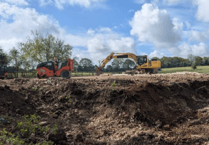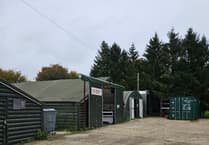When faced with an issue as huge and sprawling as climate change, the only way we are going to make any serious inroads is through collaboration.
The carbon emissions that damage our environment spring from so many sources it can be difficult to know where to start.
Plugging one source can sometimes have the unintended consequence of creating another somewhere else.
The complexity can lead to confusion and conflict.
Whereas what we need is collaboration, co-operation and consensus.
The worst mistake we can make is to get bogged down in petty disputes about the best actions to take. If we expend too much energy championing our own causes, then we risk losing sight of the big picture and we will achieve little.
But if we join forces and agree on what we need to do and how we are going to do it, then I believe we can make a real difference.
By zeroing in on the biggest causes of carbon and by focusing all our resources and attention on those targets, we can take significant strides in limiting emissions in East Hampshire.
And I am not just referring to East Hampshire District Council’s emissions but the rest of the district’s residents, businesses and visitors too.
Of course, it’s vital we’re doing everything we possibly can to reduce the impact council services have on the environment.
But as a community leader it’s our responsibility to encourage everyone to join us on our journey to carbon neutrality and reduce their environmental impact.
Last week we welcomed some of the leading climate action community groups to Penns Place to share their knowledge and expertise and to agree on a set of priorities we can act on.
The passionate and knowledgeable people of the Alton Climate Action Network, Petersfield Action Network, Energy Alton and plenty of other groups took part in the discussions.
ACAN and PeCAN have taken the initiative by looking at where the district’s biggest emissions are and now we have the evidence we need to make informed decisions.
Together we looked at transport and household energy usage, which are far and away the two biggest contributors to carbon emissions in East Hampshire.
If we can focus our efforts on those issues, we would be making tangible progress. The solutions aren’t simple, and might be outside the remit of a district council to implement, but through planning and place-making we could provide the opportunities for more sustainable transport and greener, more energy efficient homes.
Of course, we must get our house in order too. We must set the example by cutting EHDC’s own emissions and we have pledged to go carbon neutral by 2035.
We are also running a carbon audit which will measure the council’s carbon footprint and reveal where we need to make the biggest changes.
The move to our new headquarters will give us a big bump forward in this regard. The new building, based on Bedford Road, is currently undergoing renovations that will improve its environmental performance.
Once it’s ready, it will be much more efficient than Penns Place.
In a building-for-building comparison, it is estimated the new HQ will emit 74 per cent less carbon than our current premises.
But if we’re going to make a real difference to East Hampshire’s effect on the environment, then we need to come together and keep our combined focus on the ways we can make the biggest, quickest and best impact on carbon emissions.





Comments
This article has no comments yet. Be the first to leave a comment.